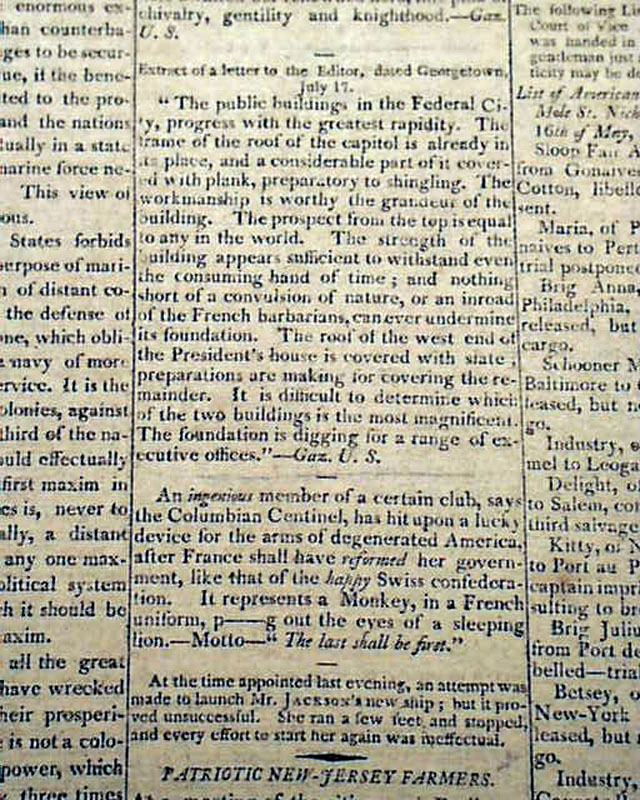Home > Back to Search Results >
Work progressing on the construction of the Capitol and "president's house"...
Work progressing on the construction of the Capitol and "president's house"...
Item # 703224
July 28, 1798
THE SPECTATOR, New York, July 28, 1798
* Construction of Washington D.C.
* White House & the Capitol building
The front page has a nice report noting: "The public buildings in the Federal City progress with the greatest rapidity. The frame of the roof of the capitol is already in its place & a considerable part of it covered with plank...The workmanship is worthy [of] the grandeur of the building...The roof of the west end of the President's house is covered with slate...difficult to determine which of the two buildings is the most magnificent..." and more.
Page 3 has both a letter, and an Act of Congress signed in type by the President: John Adams.
Four pages, wear at the margins with some minor loss, damp stains mostly near the margins.
AI notes: By 1798, the construction of Washington, D.C.’s two most important federal buildings—the White House and the United States Capitol—was well underway but not fully complete. The White House, designed by Irish-born architect James Hoban in a neoclassical style, had its exterior largely finished, allowing President John Adams and his wife Abigail to become its first residents in November 1800, though interior work continued. Labor for the project included both enslaved and free workers, and progress was frequently slowed by funding issues and logistical challenges. The Capitol, designed by William Thornton, was still under construction in 1798, with the Senate wing more complete than the House wing and much of the central rotunda unfinished; Congress had begun meeting in the partially completed building, highlighting the young nation’s determination to establish its seat of government despite ongoing technical and financial obstacles. Both projects symbolized the Federalist vision of a permanent, monumental capital city, reflecting the nation’s aspirations and the practical difficulties of building on the undeveloped banks of the Potomac.
Category: The 1600's and 1700's




















